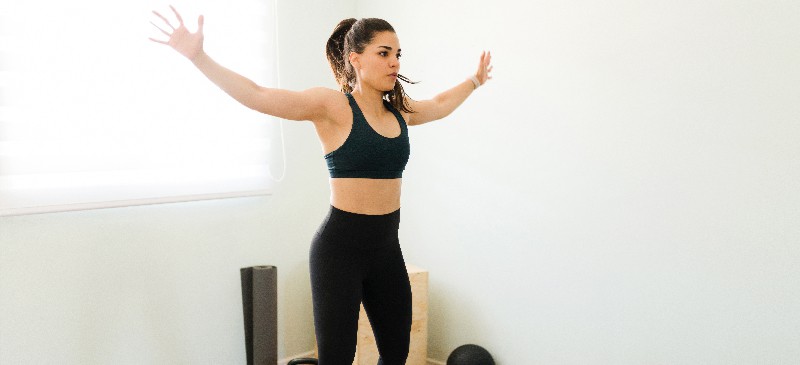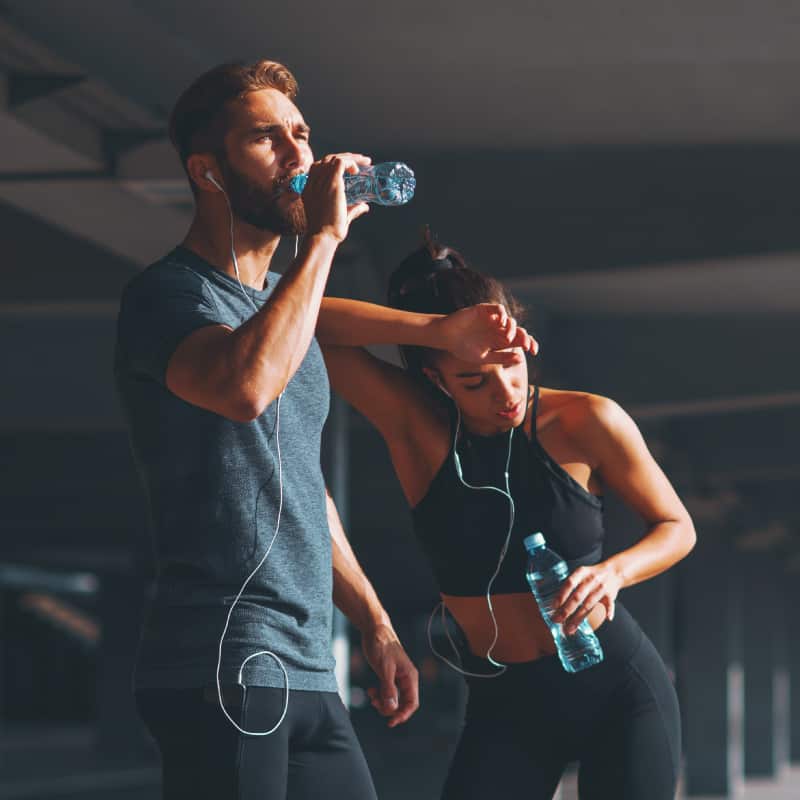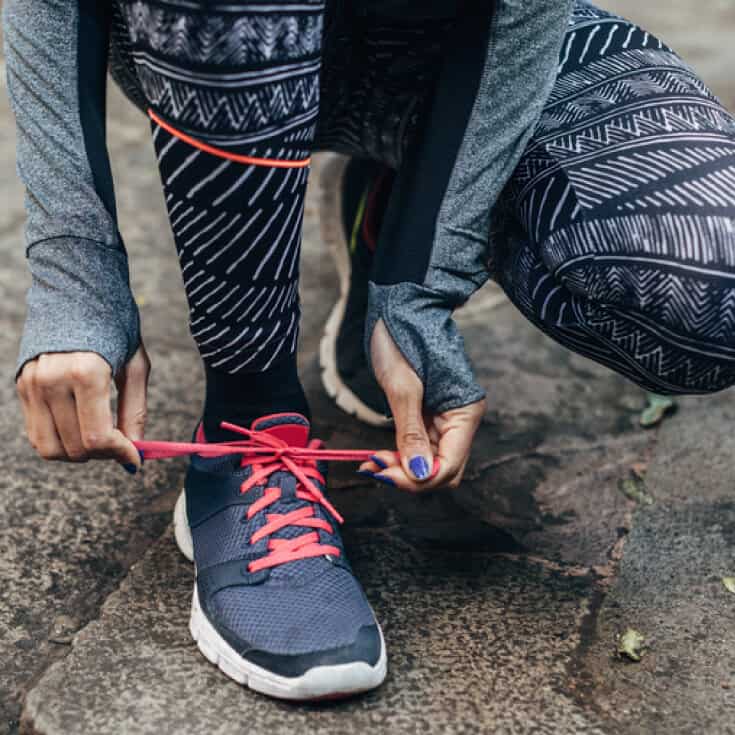This Dr. Axe content is medically reviewed or fact checked to ensure factually accurate information.
With strict editorial sourcing guidelines, we only link to academic research institutions, reputable media sites and, when research is available, medically peer-reviewed studies. Note that the numbers in parentheses (1, 2, etc.) are clickable links to these studies.
The information in our articles is NOT intended to replace a one-on-one relationship with a qualified health care professional and is not intended as medical advice.
This article is based on scientific evidence, written by experts and fact checked by our trained editorial staff. Note that the numbers in parentheses (1, 2, etc.) are clickable links to medically peer-reviewed studies.
Our team includes licensed nutritionists and dietitians, certified health education specialists, as well as certified strength and conditioning specialists, personal trainers and corrective exercise specialists. Our team aims to be not only thorough with its research, but also objective and unbiased.
The information in our articles is NOT intended to replace a one-on-one relationship with a qualified health care professional and is not intended as medical advice.
6 Benefits of Jumping Jacks + Circuit Routine
February 20, 2025

Jumping jacks go way back. In fact, you probably learned how to do the jumping jack while in elementary school.
It’s a basic exercise that most anyone can perform and can be modified to fit any fitness style needed, even for the newest exerciser.
What are jumping jacks good for? Jumping jacks are a classic type of calisthenics-style plyometric exercise that gets the whole body moving.
The jumping jack can be used as a warmup exercise to help get the blood pumping and the muscles warm and ready for a workout, or it can be part of a full-body workout, such as an interval Tabata workout, bootcamp, a HIIT-style workout and even on a trampoline.
Jumping jacks, sometimes called star jumps, require full-body movement and are an excellent leg workout. Plus, the movement is great for getting the heart rate up.
The abduction and adduction of the legs and arms add the benefits of all-over body toning, similar to burpees.
Jumping jacks can be modified for the newest exerciser by eliminating the jump to the most advanced by adding a squat and jumping as high as possible. This is known as a power jack.
Whatever style you choose, jumping jacks are amazing for helping gain and maintain fitness, reduce obesity, lower the risk of osteoporosis, improve the cardiovascular system, increase stamina, and much more.
How to do jumping jacks
A jumping jack can take a few forms, but here is how to do a basic jumping jack:
- Stand up straight, with your feet together and your hands down by your side.
- Jump your feet out to the side while raising your arms to the side and above your head.
- In one fluid motion, jump back to the starting position by lowering the arms and jumping the feet back together. That is one jumping jack.
- Continue this sequence as needed based on your workout. Typically, jumping jacks are done in sets or based on time. To do this, keep moving in a continuous motion, repeating the sequence until you accomplish your set or time goal, depending on the workout.
Benefits
1. Great for strong bones
There has been a lot of controversy and speculation over the years about what exercises actually strengthen bones. Weightlifting is one way to do this, but some researchers have suggested that quick jumping bursts can also do the trick.
In fact, jumping jacks may be the perfect exercise for stronger bones and reducing the risk of osteoporosis.
What happens is that the bones bend a little with each jumping motion, forcing new cell development. It’s the new cell creation that offers more support for the bones, ultimately strengthening them.
A 2018 study published in the Archives of Osteoporosis found that a nine-month jumping intervention for male adolescent athletes helped improve bone mass, bone stiffness and muscular fitness in swimmers and cyclers.
2. Good for the heart
Jumping jacks offer benefits to combat heart disease as well. Considering heart disease is the No. 1 killer in the U.S., making cardio exercise like jumping jacks a part of your daily fitness routine seems like a no-brainer.
If you are new to jumping activities, you definitely want to take it slow and start with the modified no-jumping version if needed. Regardless, over time you will get stronger.
The 1996 U.S. Surgeon General’s Report on Physical Activity and Health shared scientific evidence that links regular physical activity to various measures of cardiovascular health.
Further research has indicated that aerobic exercises, including jumping jacks, can enhance cardiovascular health by increasing heart rate and improving cholesterol levels.
For instance, a systematic review and meta-analysis published in 2020 examined the chronic effects of high-intensity functional training, which encompasses various bodyweight exercises, on motor function in healthy individuals. The study found that it had small to moderate positive effects on endurance capacity and strength, suggesting potential benefits for heart health.
Additionally, an article from The Times highlighted that adults in their 50s and older can improve muscle power with two to three sets of three to 10 explosive jumps performed up to three times a week. This form of exercise can enhance muscle power, which is associated with better cardiovascular health and longevity.

3. Help spark weight loss
It’s important to get the proper amount of exercise every week. The Centers for Disease Control and Prevention recommend that you slowly and safely work up to doing about 150 minutes of moderate-intensity aerobic activity or 75 minutes of vigorous-intensity aerobic activity weekly.
Another option is to combine the two. Jumping jacks offer the perfect fit for this recommendation.
They can help you achieve and maintain your weight over time, as long as you are consistent. This activity, combined with a smart and healthy eating plan, can make a huge difference in helping you reach your goals.
4. Could help you lose belly fat
While strength training with weights and specific abdominal exercises can help with visceral body fat, high-intensity exercise can really make a difference. Pairing smart caloric intake and regular, moderate-intensity exercise also can help you burn more calories, reducing belly fat.
5. Help increase stamina
Stamina is what gives us the ability to combat fatigue and fight disease, and it helps us experience physical activity for longer periods of time.
If you are new to exercise, you may notice feeling tired very quickly, but with time and commitment, you can build your stamina to be able to withstand physical activity longer.
This is important to your health because it improves the function of our muscles and can help with everyday activities, such as carrying a bag of groceries, much easier. While this may not seem important to our youth, it usually starts to affect mature adults at some point.
The development of healthy stamina comes from the body’s ability to take in and use oxygen. For anyone dealing with disease, having stamina is of greater importance since it can be more difficult to perform many activities, and it can even help prevent back problems as you age.
For example, jumping jacks are also a great quad exercise, which is a muscle that can help power you through your day.
6. Reduce risk of many health conditions
Jumping jacks fit in the category of aerobic exercise. In addition to helping with obesity, strong bones and heart disease, aerobic exercise helps reduce the risk of numerous health conditions, such as high blood pressure, type 2 diabetes, metabolic syndrome, stroke and even some forms of cancer.
Studies have shown that regular physical activity can help reduce the development of disease, such as colon cancer, by nearly 40 percent.
There is plenty of evidence showing how regular physical activity is a great preventive measure of many chronic diseases. In fact, studies have suggested that it is directly related to the reduced risk of an early death.
Jumping jack circuit workout
When performing any exercise, remember to maintain proper form. If at any time you feel any pain, stop immediately. If you are new to exercise, it is important to take it slow.
For this workout, you will need a timer or some way to track your time. The workout consists of three to four sets of six exercises performed for one minute each, followed by 15 seconds of rest and one minute of rest between each exercise.
1. Warmup
Perform each exercise for 60 seconds.
- Step side to side starting with your left
- Knee lifts, left and right
- Half squats
- Grapevine, left and right
- Easy side lunges, left and right
2. Workout
Perform each exercise for 60 seconds. Rest for 15 seconds between each exercise.
Once you have completed a set, rest for 60 seconds. Repeat for a total of 3 to 4 sets.
Use the beginner version if you’re truly a beginner and/or not used to much physical exercise.
- Jumping jacks
- Deep squats
- Jumping jacks
- Plank push-ups
- Jumping jacks
- Lunges
3. How to do the exercises
Jumping jacks
Stand with feet a little more than hip distance apart. Arms at your side.
Begin by jumping your feet out to the sides while raising your arms to the side, to a level above your head, then returning to the start. Do this in one continuous movement.
If you want to make it a little harder, perform a power jack by going into a half squat each time you land and by jumping as high as you can each time you jump.
Beginner jumping jacks
Instead of jumping, step one foot at a time out to the side while raising your arms.
Deep squats
Stand with feet hip distance apart, keeping your abs tight. Lower into a squat by sticking your glutes back as if sitting in a chair (while keeping your upper body upright). Go as low as you can, trying to get your quads parallel to the ground.
As you return to your starting position, squeeze the glutes. (It’s a great glute exercise.)
Try to put all of your weight in your heels as you perform this exercise.
Beginner squats
Do half squats by starting in the same position, but instead of going all the way down to the parallel position, only go halfway, then return to the starting position. Again, make sure to squeeze your glutes on the way up and keep your weight in your heels throughout the exercise.
Plank alternating push-ups
To perform this exercise, get in push-up position, keeping elbows slightly bent and hands directly under the shoulders. Make sure your body is straight from your head to your feet. To help, slightly tuck the hips and squeeze the abs.
Now, lower to the forearms, starting with the left arm. Once both arms are bent and you are on both forearms, lift back up to starting position by pushing up with the right hand.
Continue this sequence, alternating arms.
Beginner plank alternating push-ups
Perform the above exercise, but on the knees instead of the toes. Make sure to keep the neck and back aligned.
Static lunges
Stand with one foot forward in a lunge position, keeping your front knee at a 90-degree angle and upper body upright. Lunge as low as possible, but without the back knee touching the floor, then return to the starting position and repeat in a continuous movement.
Perform 30 seconds on each leg.
To make it harder, you can do jumping lunges.
To do this, start in the same position. Keeping your balance, jump to switch your foot positioning by taking the front foot back and the back foot to the front, much like scissor jumps but with a deep lunge.
You can use your arms to assist in the jumping motion. For example, when the left foot is forward, the right arm will be forward. It should be natural.
Make sure to land softly, switching in a continuous movement.
Beginner lunges
Perform in the same way as the static lunge, but instead of going all the way down, go about halfway, then return to the start.
Risks and precautions
As noted above, make sure you start slowly if you are new to exercise. Also make sure you warm up before any exercise and do some stretching after any exercise.
Jumping jacks do put a lot of pressure on your lower joints, such as your ankles and knees, along with your feet. That’s why it’s important to do them correctly and listen to your body.
Check with your doctor before performing any exercise, especially if you have any disease or are pregnant.
Final thoughts
- Jumping jacks can help increase stamina, boost bone density and improve your heart.
- Start off slowly, even with no-jump jacks.
- Consult a trained fitness expert for a program that is right for you.











